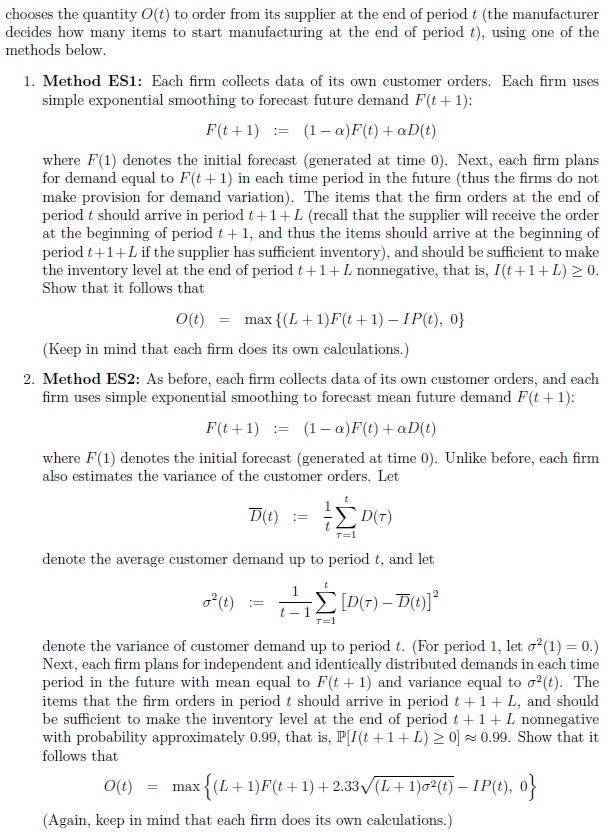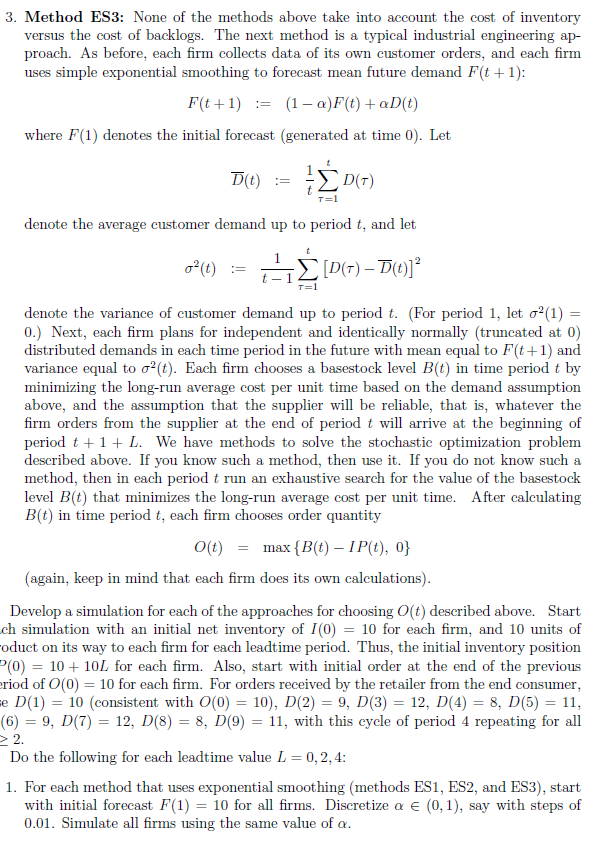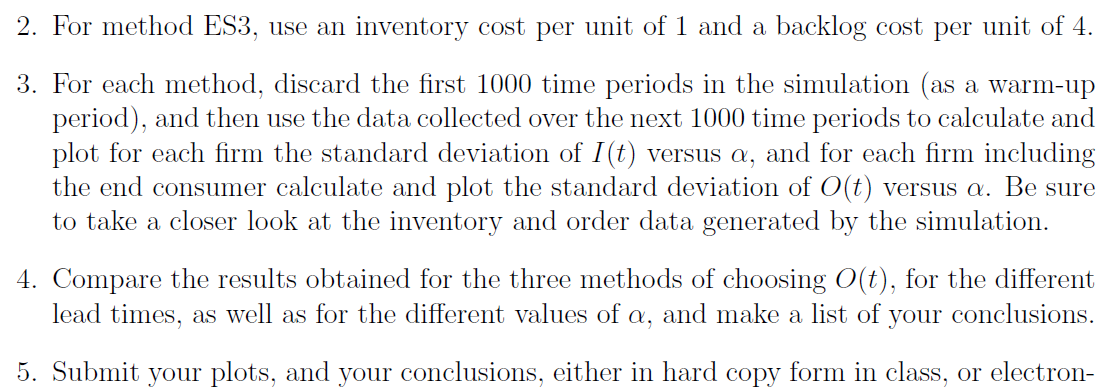Question
Use Python Consider a supply chain consisting of a manufacturer who supplies to a distributor who supplies to a wholesaler who supplies to a retailer
Use Python
Consider a supply chain consisting of a manufacturer who supplies to a distributor who supplies to a wholesaler who supplies to a retailer who supplies to consumers, similar to the supply chain game that we played in class. We are going to construct a model of the dynamics of the supply chain, and then investigate the behavior of the model. For conciseness, a generic member of the supply chain will be called a firm. At the beginning of each discrete time period t, each firm receives the goods that were sent by the supplier of the firm in period t L. The manufacturer receives the goods of which the manufacturing started in period t (L + 1). In period t, each firm also receives the order that was sent by the customer of the firm at the end of period t 1. Thus there is a lead time of L + 1 at each step of the supply chain, consisting of 1 period to transmit the order from the customer to the supplier, and L periods to send goods from the supplier to the customer (for the manufacturer it takes L+ 1 periods from the time the manufacturer places an order the manufacturing starts until the time the goods are ready for sale). Let D(t) denote the quantity ordered by the customer of a firm in period t 1 (and thus it is the quantity in the order received by the firm in period t). D(t) is nonnegative, but does not have to be an integer. Then each firm updates its inventory on-hand and amount owed, and sends an amount to its customer equal to the minimum of inventory on-hand and amount owed. If inventory on-hand is less than amount owed, then the backlog is carried over to the next time period. Let I(t) denote the net inventory at the end of period t, after the replenishment in time period t has been received from the supplier, and after the customer order received in time period t has been deducted from inventory. If I(t) 0, then it denotes that the inventory on-hand at the end of period t is equal to I(t) and there is no backlog at the end of period t, and if I(t) 


Step by Step Solution
There are 3 Steps involved in it
Step: 1

Get Instant Access to Expert-Tailored Solutions
See step-by-step solutions with expert insights and AI powered tools for academic success
Step: 2

Step: 3

Ace Your Homework with AI
Get the answers you need in no time with our AI-driven, step-by-step assistance
Get Started


